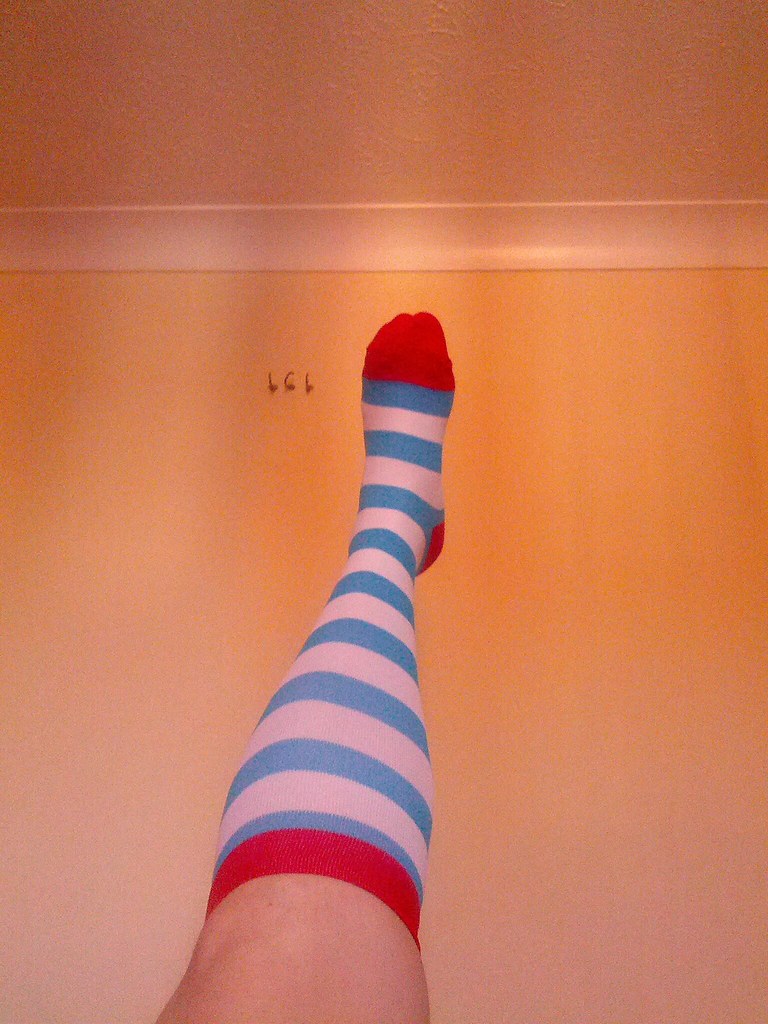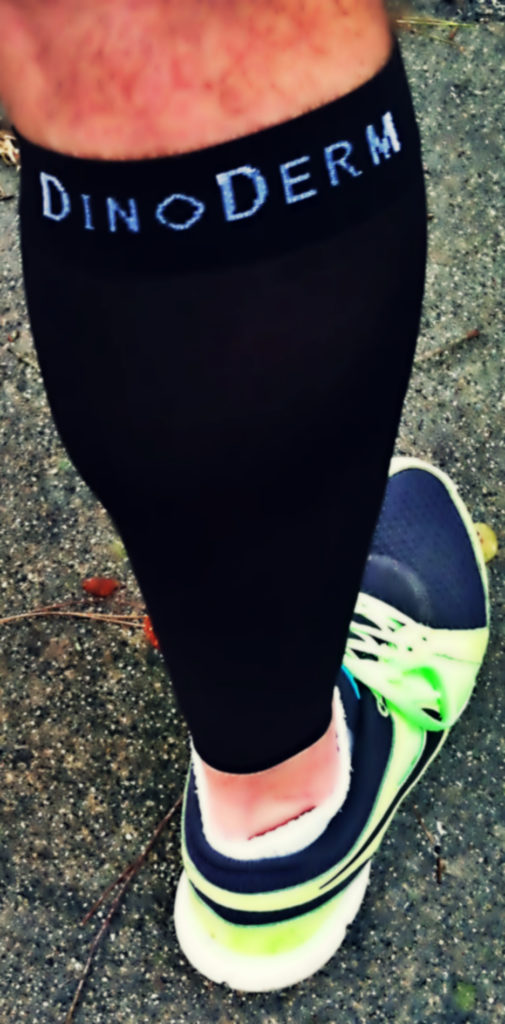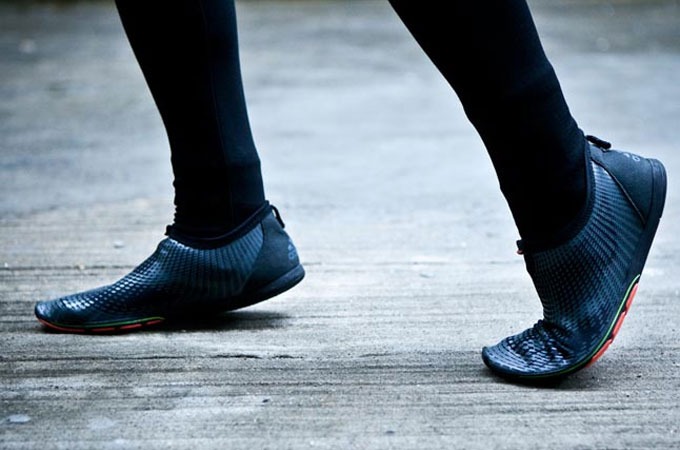Compression therapy has been around for a long time. Athletes swear by compression socks, stating that they substantially improve blood circulation while running, walking or in doing other forms of physical exertion.
Meanwhile, in the medical field, compression socks are regularly used for patients with big calves that are confined to a bed or have limited mobility.
These days, compression socks are finding a wider use among the rest of us. Their numerous health benefits for the common man/woman are making them a must-have in every wardrobe.
How Are They Different From Regular Socks?
Unlike normal socks, compression socks are built differently to feel firmer and provide more support to your legs. Compression socks use strong and tightly fitted elastic material to ensure there is enough pressure on the foot, ankle, and leg muscles at all times. Compression is graduated to help move blood from the foot and back up towards the heart. Most compression socks are made of 20% spandex and 80% nylon.
Materials like cotton, wool, nylon, polyester, and lycra are also used to make various types of compression socks for wider calves. Compression socks suitable to hot or cold weather are available.
How do Compression Socks for Big Calves Work?
Compression socks or compression stockings work by compressing the surface veins, muscles and arteries of the leg. As a result, blood circulation is enhanced in the smaller, circulatory veins. This results in blood reaching your heart faster, thus lowering the chances of it pooling in your feet, ankles, and calves. By squeezing the tissue in the legs, the blood flow against gravity is easier. Therefore, it ensures that blood can make its way back to the heart faster and easier, and inevitably results in the overall improvement of your health. Along with increased blood circulation and reduced blood pool, compression socks significantly reduce inflammation.
What are some of the things to keep in mind while purchasing compression socks?
· Appropriate Measurements
Before purchasing compression stockings, accurately measure your thighs, calves, ankles. Ensure that your compression socks are not too long. If they are, you have to roll it down and this will defeat the entire purpose of compression socks and can even have negative results instead. For best results, measure your ankle circumference starting from the narrowest to the widest part of your calf.
· Medical Conditions
Check with your physician before wearing compression stockings for any recommendations they have. The stockings are not to be used by people with certain medical conditions. For instance, those with peripheral neuropathy are not advised to wear compression stockings. Peripheral neuropathy is an interruption in blood circulation that results in nerve damage. Those who suffer from this medical condition will have limited sensation in their legs and might not be able to determine the accurate tightness of the stockings they wear. If the socks are worn too tightly, blood flow can be jeopardized. This will result in leg pain, weakness, and numbness.
People with skin infections and irritations must be careful not to wear compression garments, as they might worsen these conditions. Those suffering from pulmonary edema and peripheral artery disease are also advised not to wear compression socks. Check with your physician before making medical decisions.
What are the different types of compression stockings?
There are mainly two types of compression socks: non-gradient and gradient.
· Non-gradient compression
These stockings exert an equal amount of tension throughout the fabric and are not meant to enhance blood flow. They aid in recovery for athletes.
· Gradient compression
These types of compression socks fit snugly at your ankles and gradually apply less pressure moving up the leg, towards the knee. Gradient compression will feel difficult to put on if you select the correct size. The difference in fit provides a squeezing effect by creating a pulse-like action. This helps to overcome gravity, by pumping blood towards your heart faster and thus enhancing circulation.
What are the different sizes and styles available for compression socks?
Knee-high, thigh-high, waist-high, and sleeve compression socks are available. The length of the socks is important because it determines the area of action. While knee-high socks work on the feet, ankles, and calf, thigh-high socks work on the lower leg and the thighs. Meanwhile, full-length or waist-high hosiery will work on the entire leg length and the pelvic region. The length chosen depends on your goals for compression socks and personal preference.

· Knee-highs
Knee highs promote vein health, prevent blood clots, and provide leg comfort. Knee-high compression socks of 20-30 mmHG are the most popular, and fall under the moderate compression range. These are commonly used for treating different conditions including moderate edema, lymphedema, and Deep Vein Thrombosis (DVT), as well as in post-surgical applications.
Knee-high compression socks provide support for moderate levels of ankle and leg swelling, discomfort, spider and varicose veins and other medical conditions. These socks are ideal for people post-surgery or suffering from swollen legs or varicose veins. Physicians often prescribe these stockings.

· Sleeves
Sleeves are the tube part of the sock, without the feet. These footless stockings stretch from the ankle to the knees and have a pressure gradient that is tighter in the foot and progressively loosens as it moves towards the thighs or knees. These specialized stockings reduce foot swelling and help improve blood circulation around the legs.
Compression socks come in various sizes, shapes, and colors to suit any body type or use. Men and women wear compression socks.
Can both men and women use it?
Most compression socks for big calves are available in unisex styles and configurations. However, a completely separate range of support hosiery for men and women are also available. All lengths, sizes, and configurations of compression socks are available for both men and women. The various available configurations include toeless, regular and sleeve. Lengths include knee-high, thigh-high, pantyhose, etc. For men’s stockings, pantyhose type is generally known as waist-high leotards, and often includes various kinds of belts and attachments. A zippered fly is included in some designs.
Matching your exact calf and foot measurements is crucial, as wearing too tight compression socks can deliver the opposite result by compromising your blood circulation. Socks for large calves, after all, have different requirements.
Compression socks for big calves
If you have larger than average calves, you may need a specially tailored compression sock to fit your legs. Thankfully, compression socks also provide great plus size support. For those with big calves and need big socks, compression stockings provide extra-wide calves. These are very convenient for people with large thighs and wide calves. These socks come with a specially designed cotton padding for the joints and apply precise compression on the legs. Additionally, wide calf socks are more elastic than regular ones, as they are made with extra spandex. Thus, anyone with bigger thighs or calves can use compression stockings with ease and the same beneficial results.
What are the benefits of wearing compression socks?
· Enhanced Oxygen
Simply put, compression socks help your body by providing a greater amount of oxygen through increased blood circulation. Cells function better when they receive more oxygen.
· Pain Relief
Compression sock provides greater stability and support for your lower leg, which helps alleviate any added strain on your bones and muscles. It works especially well for common symptoms like shin splints. Furthermore, compression socks provide relief from aching and throbbing varicose veins.
· Prevents clots
Blood clot formation is a serious issue that can lead to major health complications, including deep vein thrombosis (DVT). This occurs when a clot formed in a deep vein travels through the bloodstream and gets lodged in a vital organ. If a DVT gets lodged in the lungs, it can lead to pulmonary embolism, a fatal condition where proper blood circulation throughout the body is blocked. Blood clots like these cannot be dissolved and occur frequently in our legs. Doctors highly recommend using compression socks to avoid serious medical issues.
Here’s the thing, the chances of blood clot formation are higher while being sedentary for long periods of time. This is why wearing compression socks is recommended on long drives and flights. The use of compression socks fosters the continuous flow of blood, and reduces the chance of blood accumulating or clotting in your veins. Patients confined to bed rest after surgery also benefit from these stockings.
· Improves the Efficiency of Exercise
Workouts become more enjoyable while using compression socks. Research shows that endurance capabilities in athletes is vastly improved when using compression socks. Compression socks also boost metabolic waste removal, such as lactic acid, after exercise.
Moreover, exercise recovery time is vastly improved using compression socks. Compression socks provide optimum muscle and mutual support without reducing the flexibility of the limbs. These socks are made exclusively of nylon and polymer fibers to keep them airy and prevent unnecessary sweating. In addition, they support joints and help prevent injury.
In the research project Is There Evidence that Runners can Benefit from Wearing Compression Clothing?, scientists tried to identify the effects of compression clothing on running performance and recovery. By doing a comprehensive data analysis from electronic databases like PubMed, MEDLINE, SPORTDiscus, and Web of Science, along with relevant journal articles, researchers found that compression gear helps improve endurance performance of runners.

The onset of muscle fatigue and leg soreness was delayed while using compression gear. Additionally, it improved stamina, increased blood lactate clearance, reduced exertion, and provided peak leg muscle power immediately after running. Compression socks helped minimize pain, muscle damage, and inflammation.
Another research project found that using compression socks while exercising improves subsequent performance. This was determined by assessing the immediate effect of wearing compression socks on 5k running time trials. Twelve male runners completed two experimental sessions of a standard running warm-up, followed by a 5k time trial, a one hour recovery period, and a repeat of the warm-up and 5k time trial. The first session was done wearing compression socks, and the next without them. Compression socks positively improved performance because of improved oxygen delivery and reduced muscle oscillation.
Another study from 2016 found that using compression socks improved the oxygen cost of running almost 9% at the velocities of 10, 12, 14, and 16 kilometers per hour.
· Reduces foot/calf/leg swelling.
Using compression socks reduces leg swelling by stimulating the lymph movement in the legs. Lymph is the pale fluid surrounding our cells that carries white blood cells. Swelling in the leg is reduced as lymph travels through the blood faster.
What are the different compression levels?
Compression level, or the level of pressure exerted by the socks on your leg, is measured using Millimeters of Mercury, abbreviated as mmHg. Blood pressure is measured the same way. The graduated compression factor is the distinguishing feature of any compression gear. Without compression these socks are just a regular pair of socks. Graduated compression pressure ranges from 8 to 40mmHg.
However, doctors mostly recommend 20-30mmHg socks as they are the most suitable for the contemporary lifestyle. The ideal compression level for your socks depends on various factors like the size, material and structure of the socks. In addition, the shape and size of your leg, your medical condition, and personal preference should be taken into account when choosing your compression socks. Compression socks should fit your leg snugly, but never be too tight.
· Standard levels for medical-grade compression socks
Medical grade compression socks are categorized into four levels of graduated compression based on mmHg:
Over the counter: 15-20 mmHg
Medical class 1: 20-30 mmHg
Medical class 2: 30-40 mmHg
Medical class 3: 40-50 mmHg
· Standard levels for athletic grade compression socks
Compression socks made for running and other athletic activities are also categorized into four levels of graduated compression:
- Mild compression: 8-15 mmHg
- Moderate compression: 15-20 mmHg
- Firm compression: 20-30 mmHg
- Extra firm compression: 30-40 mmHg
Both medical grade and athletic compression socks will be tighter around the foot but progressively less snug as they rise to the knee. The further up the leg it goes, the lesser the compression will become.
What are the medical conditions for which compression socks are recommended?
· Varicose veins
This is a medical condition that causes veins to appear enlarged and swollen. Though varicose veins cannot be completely eliminated just by using compression socks, the negative impact of venous disorders on your body can be brought down to a minimum.
· Chronic venous insufficiency (CVI)
Chronic venous insufficiency (CVI) is a medical condition in which the veins are unable to pump deoxygenated blood to the heart. Use of compression stockings helps regulate the movement of the blood, ensuring the proper function of organs.
· Lymphodema
Lymphodema is a medical condition where the tissues in the body swell up because lymph is not moving properly through the body. It is commonly seen in the legs and arms.
· Post-Thrombotic Syndrome (PTS)
Compression socks are also prescribed by doctors for the following conditions:
· To improve blood circulation in the legs
· To provide vein support
· To prevent the accumulation of excess blood in the leg veins
· To prevent or reduce leg swelling
· To prevent ulcers in the leg veins
· To prevent deep vein thrombosis (DVT) in legs
· To reverse venous hypertension
· To improve lymphatic drainage
Are there any side effects in using compression stockings?
It is worth noting that no adverse effects of using compression socks have been reported. This means you don’t have anything to lose and can gain a lot. However, if used incorrectly, compression socks can lead to skin irritation, broken skin, and discomfort. These can be remedied with the correct use and size of compression stockings. Check your legs and feet daily after removing your stockings. Watch for any signs of irritation or damage. Contact your doctor immediately if irritation occurs.
Who can benefit from compression socks?
· Pregnant women
· Athletes
· People who have to stand for 8+ hours at work on a regular basis. For example, nurses, waiters, cashiers, and flight attendants who have to be on their feet around the clock.
· People who have to sit for long hours such as regular office workers, IT professionals, and others.
· Air travelers on long flights, including pilots and flight attendants.
· People who just had surgery, or are confined to bed.
· People with blood circulation problems such as varicose veins, DVT, or diabetes.
How to put on compression socks?
· Before putting on compression socks, smooth them out to avoid bunching.
· After putting them on, make sure they are flat against your skin with no wrinkles.
· Ensure that they are not too long. Avoid rolling down or folding the tops since this can make them too tight, which could possibly lead to problems with blood flow and circulation. Folding also interferes with the compression mechanism and might damage the socks.
· Do not wear compression socks in the shower or when sleeping.
· You can wear socks, shoes, or slippers, over your compression socks.
You can also find educational videos online on how to put your compression socks on. Customer reviews also provide insights.
Popular Articles on ComproGear
Best Compression Socks for Elderly Best Socks for Seniors Aching Feet
How long can you wear compression socks?
Compression socks can be worn throughout the day. However, take them off before retiring to bed at night. The duration of time to wear the socks may depend on your medical condition or as prescribed by your doctor. However, for normal use, removing the socks before the day ends might reduce their positive effects.
How to maintain your compression socks?
Cleanliness and hygiene are important when using compression socks. Wash your compression socks after every use. After using compression socks for eight hours, the compression effect gradually starts waning. However, washing easily restores this property.
Washing Instructions
· The garments should be hand washed in a sink or basin while using mild soap and cool water.
· After soaking them for a few minutes, rinse thoroughly with cool water.
· Hot water should be avoided; heat will ruin the fabric by weakening its elastic. The ideal washing temperature is 40C.
· To remove water, gently squeeze the socks. Do not wring the socks, as this damages the weave. Dry them without exposure to direct heat.
Conclusion
Give your feet, ankles, and legs a well-deserved break with regular use of compression socks. The fabric provides a soothing massaging effect, helping users feel better, recover faster, and stay healthier. These socks are regularly being used by people since the 1960s for sports, medical purposes, and comfort. Compression socks are a simple and effective solution for several health problems. Add compression socks to your wardrobe to enjoy their benefits. Compression socks definitely make your life easier whether you are running, walking, sitting or standing.
This page last updated December 15, 2022
